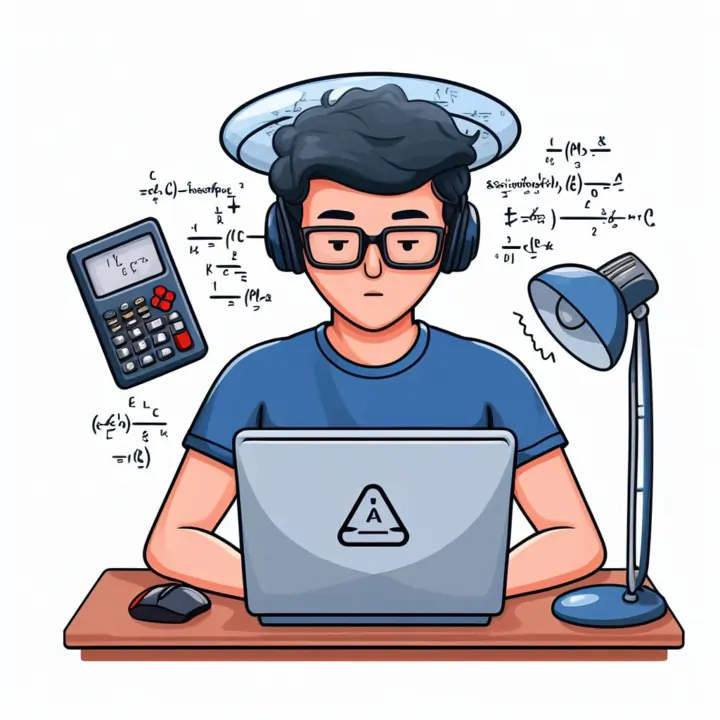Understanding Image Filtering and Restoration: MATLAB's Convolution and Deconvolution Functions

In the realm of image processing, the fundamentals of image filtering and restoration are essential topics that every university student studying this field must grasp to complete his image filtering and restoration assignment using MATLAB. These concepts lay the foundation for various image enhancement and restoration techniques used in countless applications, from medical imaging to computer vision. In this comprehensive theoretical discussion, we will delve into the core principles of image filtering and restoration, emphasizing the role of MATLAB functions in convolution and deconvolution.
Image Filtering: A Primer
Image filtering is a crucial operation in image processing, aimed at enhancing or extracting useful information from images while reducing noise and unwanted artifacts. Filtering involves the convolution of an image with a filter kernel, also known as a mask or a template. The fundamental idea behind image filtering is to modify the intensity values of pixels based on their neighbourhood, which can be a small region around each pixel or the entire image.

Convolution in Image Filtering
Convolution is the mathematical operation that underlies image filtering. In the context of image processing, convolution can be defined as follows:
Given an input image I(x, y) and a filter kernel F(s, t), the convolution operation is represented as:
(I∗F)(x,y)=∑s∑tI(x−s,y−t)⋅F(s,t)
Here, (I * F)(x, y) represents the convolution result at position (x, y) in the output image.
Convolution can be thought of as a sliding window operation, where the filter kernel moves over the entire input image, and at each position, the element-wise multiplication of the filter kernel and the corresponding region of the image is summed to produce the output pixel value.
Convolution is essential for various image-processing tasks, such as blurring, edge detection, and sharpening. MATLAB provides a convenient way to perform convolution using functions like conv2 and imfilter.
Image Restoration
Image restoration is the process of improving the quality of an image by removing or reducing noise, blurriness, or other distortions that may have occurred during image acquisition or transmission. This process often involves deconvolution, which is the inverse operation of convolution.
Deconvolution in Image Restoration
Deconvolution is the process of recovering the original image from its convolution with a known point spread function (PSF) or filter kernel. In mathematical terms, the deconvolution operation can be represented as:
(I∗h)÷H=I
Where:
- I is the degraded image,
- h is the PSF or filter kernel that caused the degradation,
- H is the Fourier transform of h,
- ∗ denotes convolution, and
- ÷ denotes element-wise division.
Deconvolution is a challenging task because it involves the estimation of h or H and dealing with potential noise amplification. MATLAB offers several functions like deconvwnr and deconvlucy for deconvolution, making it accessible for image restoration tasks.
Practical Applications
Now that we have covered the theoretical aspects of image filtering and restoration let's explore some practical applications where MATLAB functions for convolution and deconvolution play a vital role:
- Medical Imaging: In medical imaging, image filtering plays a critical role in enhancing diagnostic images. For example, noise reduction filters can be applied to X-ray images, making subtle abnormalities more visible. Deconvolution is particularly valuable in MRI and CT scans when motion artifacts or instrument imperfections cause blurriness. By applying deconvolution techniques, medical professionals can obtain sharper and more accurate images, aiding in precise diagnoses and treatment planning.
- Image Recognition: Convolutional Neural Networks (CNNs) are the backbone of modern computer vision systems. These networks rely heavily on convolution operations for feature extraction. MATLAB's convolution functions are crucial for implementing and testing CNN architectures. Convolutional layers in CNNs learn various filters that identify patterns, edges, and features in images. This enables applications like object recognition, facial recognition, and even self-driving car perception.
- Photographic Enhancement: Photographers and graphic designers use image filtering techniques to enhance the visual appeal of photos. Filters like noise reduction, sharpening, and colour correction can drastically improve the quality of images. By reducing noise and enhancing details, photographers can produce striking and professional-quality photos for various purposes, including advertisements, magazines, and personal portfolios.
- Astronomy: Astronomers face unique challenges when capturing images of celestial objects due to atmospheric turbulence and telescope imperfections. Deconvolution techniques are invaluable in this context. By applying deconvolution, astronomers can reverse the blurring effect introduced by the Earth's atmosphere or telescope imperfections, resulting in clearer and more accurate images of stars, galaxies, and other celestial phenomena. This aids in astronomical research and discoveries.
- Video Compression: Video codecs use various filtering techniques to reduce redundancy in video frames, enabling efficient storage and transmission. Filters like motion compensation, spatial downsampling, and temporal differencing are applied to video frames to remove redundant information while maintaining acceptable video quality. This compression is crucial for video streaming, video conferencing, and the storage of large video datasets, as it reduces bandwidth and storage requirements.
Challenges in Image Restoration
While MATLAB provides powerful tools for image restoration, it's important to acknowledge the challenges involved in the process:
Ill-Posed Problems
- Deconvolution problems are often categorized as ill-posed because they lack unique solutions. This means that multiple plausible solutions can exist for a single deconvolution problem.
- Small changes in the input data, such as noise or variations in the point spread function (PSF), can lead to significant variations in the output, making it challenging to determine the true underlying image.
- To address this issue, regularization techniques are commonly employed during deconvolution. These techniques introduce constraints or prior knowledge about the image, helping to stabilize the deconvolution process and produce more reliable results.
Noise
- Real-world images are prone to noise, which can result from factors like sensor imperfections, electronic interference, or environmental conditions during image acquisition.
- When deconvolution is applied to noisy images, there is a risk of amplifying the noise, which can lead to undesirable artifacts and reduced image quality.
- To overcome this challenge, careful consideration of noise reduction methods is crucial in the image restoration process. Techniques like Wiener filtering or total variation regularization can be employed to suppress noise during deconvolution and enhance the signal-to-noise ratio in the restored image.
Estimation of PSF
- Accurate estimation of the point spread function (PSF) is a fundamental requirement for successful deconvolution.
- The PSF describes how an ideal point source is spread out in the image due to the imaging system's characteristics. In practice, it is often unknown and needs to be estimated.
- Estimating the PSF can be challenging, especially for complex imaging systems with aberrations or non-uniform blurring. Errors in PSF estimation can lead to inaccuracies in the deconvolution process, affecting the quality of the restored image.
Computational Complexity
- Deconvolution algorithms can be computationally intensive, especially when dealing with large images or high-resolution datasets.
- The process involves numerous mathematical operations, such as convolution and iterative optimization, which can require significant computational resources.
- Efficient implementation and optimization are necessary to achieve real-time or near-real-time processing for applications like live medical imaging or video deblurring. Parallelization, GPU acceleration, and algorithmic optimizations play a crucial role in managing the computational complexity of deconvolution.
Conclusion
Understanding the fundamentals of image filtering and restoration is indispensable for university students pursuing studies in image processing. MATLAB's functions for convolution and deconvolution provide a practical means to apply these concepts in various applications. Image filtering allows for the enhancement and extraction of valuable information from images, while deconvolution aids in the restoration of degraded images. However, it's essential to be aware of the challenges associated with deconvolution, such as ill-posed problems, noise, PSF estimation, and computational complexity. Armed with this knowledge, students can approach image-processing assignments and real-world problems with confidence and expertise.